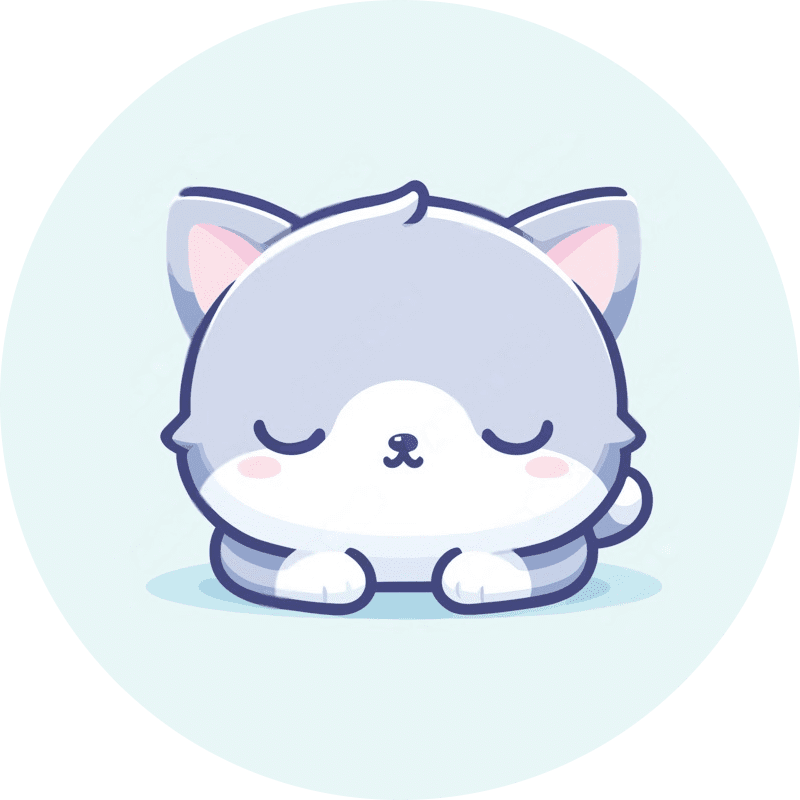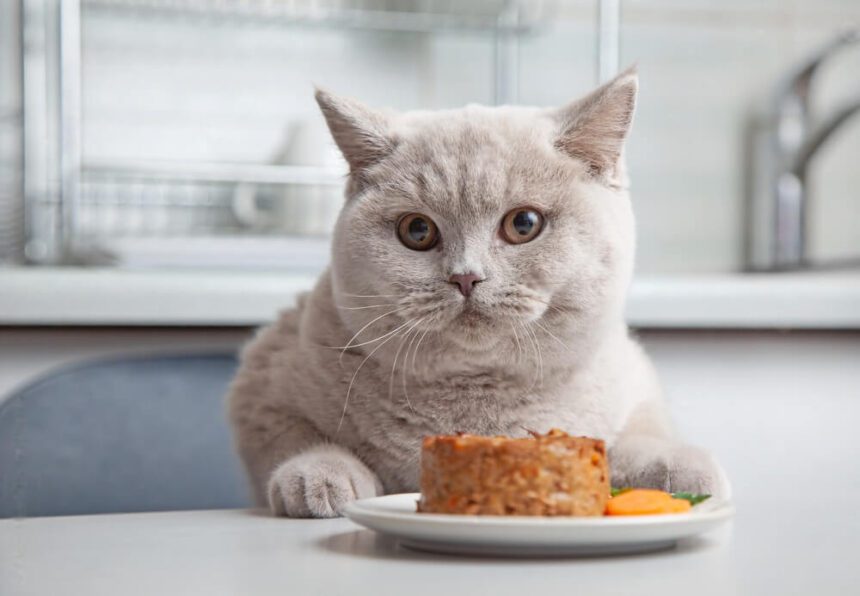Feeding your feline friend the right amount of food is essential for their health and overall well-being. Yet, many cat owners find themselves pondering the age-old question, “How much food should I feed my cat?” Finding that perfect balance between providing your cat with adequate nutrition and preventing overfeeding can be a real head-scratcher.
In this comprehensive guide, we’re diving deep into the factors that influence your cat’s food requirements, the art of determining the right serving size, and addressing some common FAQs that all cat owners should know.
Understanding Your Cat’s Nutritional Needs
Cats are unique creatures with specific dietary needs. They are obligate carnivores, which means their diet should primarily consist of animal protein. Their nutritional requirements are quite different from those of humans and even dogs.
Cats require essential nutrients such as taurine and arachidonic acid, which are naturally found in animal tissues. These nutrients are vital for their optimal health and cannot be adequately synthesized by their bodies. So, it’s crucial to provide them with a diet rich in animal-based proteins.
How Much Food Should You Feed Your Cat?
The amount of food your cat needs can vary depending on several key factors, including their age, weight, activity level, and overall health. To determine the right feeding amount for your specific cat, it’s always best to consult with a veterinarian who can offer personalized advice.
However, as a general guideline, adult cats typically require about 20-30 calories per pound of body weight per day to maintain their weight. Keep in mind that this can vary based on your cat’s activity level and metabolism. Kittens, on the other hand, require more calories to support their rapid growth and development.
To prevent overeating and promote healthy digestion, it’s recommended to divide the daily calorie requirement into multiple small meals throughout the day rather than offering one large meal. This approach helps in maintaining portion control and ensures that your cat gets the right amount of food at the right time.
How Much Food Should You Feed Your Cat Every Day?
The daily food requirements for your cat can vary depending on factors such as their age, weight, activity level, and overall health. While these general guidelines provide a starting point, it’s essential to remember that each cat is unique, and their individual needs may differ.
For adult cats, the typical daily requirement falls within the range of 20 to 30 calories per pound of body weight. To put it into perspective, canned or wet cat food usually contains around 20-30 calories per ounce, while dry cat food offers about 300-500 calories per cup. However, these numbers can fluctuate depending on the brand and specific product, so always check the packaging for precise feeding guidelines.
When determining the right amount of food to provide your cat, it’s crucial to consider their metabolic rate, level of physical activity, and any underlying health conditions. Monitoring your cat’s weight and physical condition regularly, along with guidance from a veterinarian, will help ensure you’re providing the right quantity of food for your furry friend.
How to Ensure Your Cat’s Diet is on Point
Here are some essential steps to keep your cat’s diet in check:
- Measure and Monitor: For maintaining a healthy weight, it’s important to measure your cat’s food and track their weight. You can use an online calculator or a weight chart for reference.
- Age Matters: Consider your cat’s age when determining their feeding schedule. Kittens typically require more frequent meals due to their smaller stomachs and higher energy needs for growth. As they grow, you can gradually reduce the frequency of meals.
- Quality Over Quantity: It’s not just about the amount; it’s about the quality of food. Opt for high-quality cat food that meets your cat’s specific dietary needs.
- Meal-Feeding Over Free-Feeding: While some cats do well with free-feeding (leaving food out for them to graze on), many tend to overeat, which can lead to obesity. Meal-feeding, where you offer measured portions at specific meal times, provides better control over their calorie intake.
- Hydration is Key: Ensure your cat always has access to fresh water. Cats have low thirst drives, so it’s essential to encourage them to drink water. Keep their water bowl clean and refill it regularly.
- Respect Their Space: Cats often prefer to eat in peace, so it’s a good idea to leave them alone during mealtime. If your cat is a picky eater, try not to give in to their pleas for leftovers.
Wet vs. Dry Food: The Great Debate
One question that often arises is whether you should feed your cat wet food, dry food, or both. Both options have their advantages, so it’s a matter of finding the right balance for your cat.
Wet Food: Wet food is crucial in your cat’s diet as it provides essential moisture and proteins. It’s especially important for cats that have urinary tract issues. The high moisture content in wet food helps maintain their hydration.
Dry Food: Dry cat food can promote dental health by helping remove plaque. It’s also convenient and can be left out for cats to graze on. However, it’s essential to choose high-quality dry food to ensure it meets your cat’s nutritional needs.
Balancing Act: Offering a combination of both wet and dry food can be a great way to balance your cat’s diet. Ensure you check the labels for both types and avoid table scraps or treats with additives like sugar or fat.
How Much Wet Food Does Your Cat Need?
Cats should have wet food daily, but determining the right amount can be a bit tricky. You can measure the quantity using a pocket scale or a measuring cup, depending on what’s convenient for you.
Here’s a general guideline based on age and weight:
- Under 6 months: 3.3 ounces per day
- 6 to 9 months: 4.6 ounces per day
- 9 to 12 months: 5.8 ounces per day
- 12 to 15 months: 6.8 ounces per day
- Over 15 months: 8.4 ounces per day
Remember, these numbers are not set in stone. The exact amount may vary based on your cat’s individual needs, so it’s always a good idea to consult your veterinarian for personalized guidance.
Frequently Asked Questions
Let’s address some common questions that often pop up in the realm of cat feeding:
How Often Should I Feed My Cat?
Cats generally thrive on regular feeding schedules. It’s recommended to feed adult cats two meals per day, while kittens may require three to four smaller meals to meet their higher energy needs.
Can I Leave Food Out For My Cat To Graze On?
Leaving food out all day, known as free-feeding, can lead to overeating and obesity in some cats. It’s best to establish specific meal times and remove any uneaten food after about 30 minutes to maintain portion control.
Should I Feed My Cat Dry or Wet Food?
Both dry and wet cat food options have their advantages. Wet food provides higher moisture content, which can be beneficial for cats with urinary tract issues. Dry food promotes dental health. Offering a combination of both is often recommended, based on your cat’s preferences and dietary needs.
Can I Give My Cat Treats?
Treats can be part of your cat’s diet, but it’s essential to practice moderation. Treats should not exceed 10% of your cat’s daily caloric intake to prevent nutritional imbalances.
What Should I Do If My Cat Refuses To Eat?
If your cat consistently refuses to eat or experiences a sudden loss of appetite, it may indicate an underlying health issue. Contact your veterinarian for guidance.
Can I Change My Cat’s Diet Abruptly?
Cats can be sensitive to dietary changes. It’s advisable to transition to a new cat food gradually by mixing small amounts of the new food with the old one over a period of 7-10 days. This helps prevent digestive upset.
Conclusion: Keeping Your Cat Happy and Healthy
Feeding your cat the right amount of food is essential for their overall health and well-being. Your cat’s age, weight, activity level, and health condition all play a role in determining the appropriate serving size.
Regularly monitoring your cat’s weight and observing their body condition, along with guidance from a veterinarian, will ensure you provide them with the correct nutrition. Remember, a balanced diet contributes to a happy and thriving feline companion.
By avoiding common feeding mistakes and introducing new foods gradually, you can help keep your cat in the best shape possible. Consult with your veterinarian for personalized advice and give your cat the love and care they deserve.



